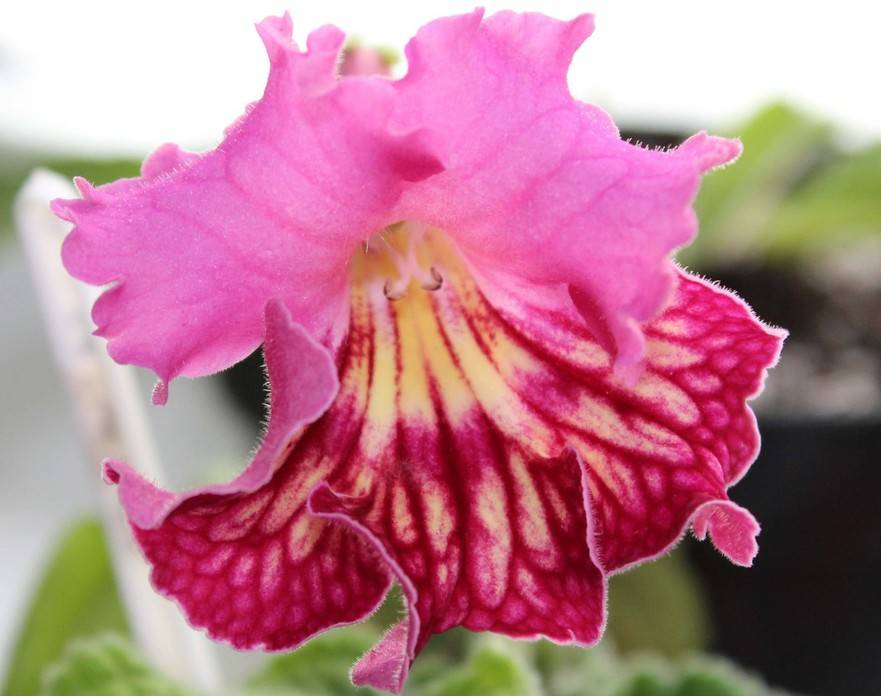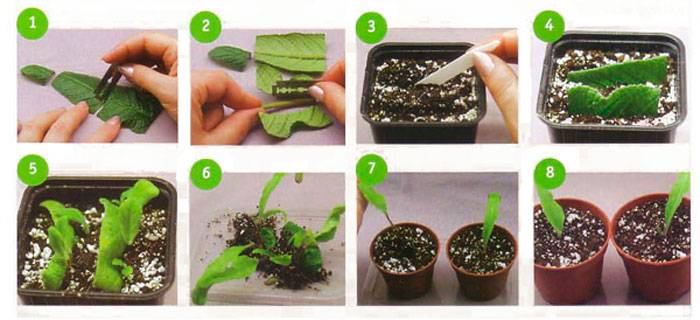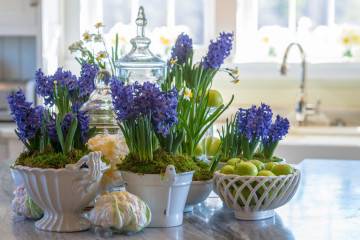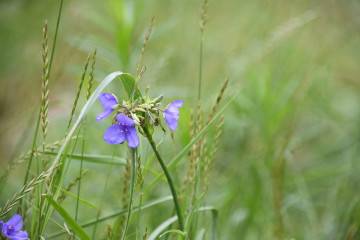Streptocarpus - home care
Content:
Streptocarpus is a popular indoor plant, which is easy to take care of at home. Even a novice florist can grow it, and therefore you should not worry about the complexity of the planned event - it is better to just get down to business.
Streptocarpus - what kind of flower is it, what family it belongs to
Streptocarpus belongs to the Gesneriev family. Plants of this family can be perennial and annual. In nature - herbaceous shrubs with flowers with 5 petals and fruits in the form of a spiral seed capsule.
Brief description of why it is called that, origin story
The homeland of the plant is Asia, Africa, the island of Madagascar. It has been popular for about 150 years. It has densely pubescent, wide and long leaves. The edges of the petals of flowers can be wavy, there are double forms. The plant has about 130 species, which have a different structure of leaves and flowers. Hybrid forms have large inflorescences (from 4 to 8 cm).
Varieties of indoor plants with names, what they look like
At the moment, there are about 130 plant varieties. Most of the streptocarpus species are suitable for growing and care at home.
Streptocarpus snow-white (Streptocarpus candidus)
The plant has a rosette structure, wrinkled leaves. Many people note that white small flowers exude a honey smell. Their length is 2.5 cm. Flowers with yellow stripes and small red spots in the fauces.
Streptocarpus large (Streptocarpus grandis)
Large streptocarpus is a plant with a single leaf, the length of which reaches 40 cm and width - 30. On a half-meter stem, there are flowers of a light lilac shade. In the pharynx, the color is darker.
Streptocarpus cornflower blue (Streptocarpus cyaneus)
The rosette plant has stems 15 cm in length. Each of them has a pair of pink flowers with purple stripes and a yellow core.
Streptocarpus wendlandii
Wendland originated from South Africa. Its leaf is dark green in color with lighter veins and measures 90x60 cm. The flowers are located on long peduncles about 5 cm long. The purple funnel-shaped corollas in the pharynx have white stripes.
Rocky streptocarpus
The plant of this variety lives in most cases on mountain slopes and embankments near the sea coast. The appearance of the inflorescences resembles a crocus - it has lilac-purple flowers on green peduncles.
How to care for streptocarpus at home
Taking care of streptocarpus is not as difficult as it might seem at first glance. The plant is quite unpretentious - it is required to water it regularly and observe the temperature regime. As the flower grows, it will have to be transplanted into wider pots.
Illumination and temperature conditions
Growing streptocarpus at home is required in bright diffused light. It is recommended to choose window sills located on the west or east side of the house. In warmer seasons, the temperature for growing a flower should be between 20-25 ° C. However, already from mid-October, it is required to gradually reduce it to 15 ° C so that the plant overwinters better.
The northern side is not suitable for streptocarpus at all, since it will lack light, which is why the plant will begin to wither and rarely please with its flowering.
Watering rules and humidity
In spring and summer, an indoor flower requires systematic moderate watering so that the clod does not dry out. It is recommended to reduce the amount of water from mid-October, and in the winter to ensure that the soil does not dry out. For irrigation, water at room temperature is most often used, which has been defended for at least 24 hours.
Moderate air humidity is required, and therefore there is no need to spray the leaves and flowers.
Top dressing and soil quality
Fertilization is required during the growing season. For these purposes, it is recommended to use fertilizers with a mineral composition. It is required to add them to the soil 3-4 times a month.
The soil should contain various components so that streptocarpus can grow calmly and delight the people who breed it with beautiful flowering. To do this, you can either purchase a ready-made mixture for saintpaulias or violets in the store.
You can independently prepare soil from the following components:
- peat;
- leafy land;
- perlite;
- vermiculite;
- sphagnum moss.
It is required to take the components in equal proportions and mix thoroughly.
Flower container size
Correct dilution consists in choosing an appropriate planting container. It is required to give preference to shallow wide pots with drainage holes.
It is better to refuse to buy clay containers, as the roots can grow into the walls, which subsequently makes it difficult to transplant. For planting streptocarpus, it is worth choosing plastic containers.
Pruning and replanting
A transplant is required as the plant grows. It itself indicates the need for this event - the number of leaves increases. In this case, you need to choose a new pot and carry out your plan. After that, watering must be done through the pallet for a month.
Features of flowering plants
During flowering, it is recommended to remove wilted flowers in the same way as old leaves. In this case, the flower will grow faster and bloom profusely.
A period of activity and rest
A dormant period is required for the plant in winter. It is recommended to change the conditions for the stay of the flower at this moment: reduce the air temperature to 15 ° C. This can be considered relative dormancy, since the leaves do not dry out during this period. Careful care is required. The flowering period lasts from spring to autumn.
Types and shape of flowers
The color scheme of the color is varied: streptocarpus can be lavender, pure white, pink, red and very dark (for example, Night Watch). Flowers can have rounded and wavy edges at the petals, there are two colors. There are hybrids that have up to 4 shades on the petals.
Flower propagation methods, when it is better to do it
Florists rarely stop at one copy of a plant in their home, especially if the flower is to their liking. You should not blame them for this - after all, everyone wants to propagate beautiful flowers in large quantities, and therefore it is useful to know how streptocarpus reproduce.
Reproduction by dividing the bush
The easiest and least labor-intensive way is to divide the bush. You can perform a similar procedure on a highly overgrown flower. This requires watering the substrate abundantly, carefully pulling out the plant, holding it with your hand at the base of the stem, and removing the soil from the roots. Then it is necessary to separate part of the rhizome with foliage. It is recommended to carry out this procedure with a sharp knife.
Then plant the new plants in pots and place them under a plastic bag, wrap or jar to create a light greenhouse effect.
Growing from seeds
Breeding streptocarpus from seeds at home is the longest and most laborious process. Seeds must be distributed evenly over the soil surface, sprayed with a spray bottle and covered with foil. It is worth regularly ventilating the plantings, providing diffused light and a constant air temperature of 20 ° C. For crops it is better to use artificial lighting.
After 7-8 days, it is worth removing the shelter. The first pick is made into a container that is larger than the previous one, so that the distance between the shoots can be increased. The second is in individual pots. You can transplant at any time of the year.
Cuttings
A healthy young leaf blade can serve as a good breeding material for streptocarpus. For this, the sheet is divided into several parts using a sharp blade. Places of cuts should be dried, and then planted vertically in pots.
It is quite simple to root parts of the leaf in this way, the use of growth stimulants is not required, however, it is worth using fungicidal solutions to protect streptocarpus from diseases.
Growing problems, diseases and pests
Streptocarpus is highly susceptible to various diseases. Bacterial and fungal infections are common. The disease manifests itself when the air humidity changes, the air temperature rises and falls, and the plant is in constant contact with water.
In dry air, the plant can begin to be overcome by various insects: aphids, scale insects, thrips. The presence of pests is indicated by the fact that the unblown streptocarpus flower has dried up.
The question often arises of why healthy streptocarpus does not bloom. In this case, you just need to transfer it to a brighter place, where the duration of illumination will be at least 12 hours.
How to deal with them
When streptocarpus disease is affected, it is required first of all to cut off the infected fragments. Then, if the disease has appeared recently, spray the plant with fungicides or a weak concentration of soapy water. Florists also give advice to think about whether the flower is in good enough conditions or not.
With strong reproduction of pests, you will have to transplant the flower into another pot.
The love of flower growers for streptocarpus is endless. They are ready to make any sacrifices to get a new flower variety first, and will also protect it from pests to the last. Those who have chosen this path know everything about caring for a plant. This information is also worth familiarizing with for beginners.





















